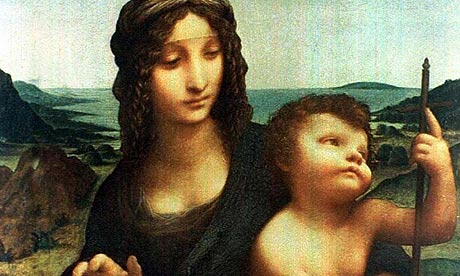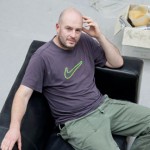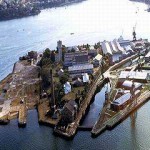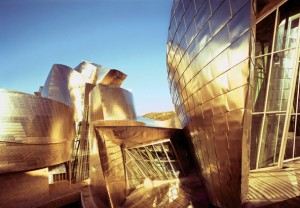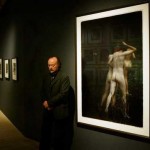“In March, 2008, Kemp checked his e-mail and saw another submission—a digital image of a drawing on vellum, or fine parchment. Ever since Dan Brown published “The Da Vinci Code,” five years earlier, Kemp had been flooded with works, many of them purportedly embedded with cryptic symbols, and, after a lifetime of dismissing forgeries and copies and junk, he was instinctively wary. About thirteen inches long and nine inches wide, the picture showed the profile of a girl, on the cusp of womanhood, with pale skin and glowing brown hair pulled back in a long ponytail. Her left eye, the only one visible in the profile, had a lifelike translucency. Her upper lip pressed secretively against her lower one, and a red bodice peeked out from underneath a green dress. The artist had meticulously rendered the girl’s features with pen and colored chalks (“Her face is subtle to an inexpressible degree,” Kemp later wrote), and Kemp felt a shiver of recognition. He enlarged the image on his computer screen until it became a mosaic of pixels. He looked closely at the shading—it seemed to have been drawn with a left hand, just as Leonardo had done…”
Read More: The mark of a masterpiece
“One image that Jake Chapman is looking at depicts a sweet, grinning boy sporting a helmet made from a folded newspaper and waving a homemade wooden sword. It’s the very image of the kind of wholesome, Enid Blytonesque activity that parents hope their children will be engaged in during the summer holidays but, let’s be honest, probably aren’t. Of course, there’s a twist. The cartoon of the boy is underlaid by another drawing in the style of Philip Guston. This shows an arm holding a long serrated blade that seems to stab through the boy’s grinning face into another body, spurting blood over the back of the boy’s head. Nothing like this appeared amid the bonnets and bunnies of my four-year-old’s Tesco Easter colouring book. Which, to my mind, is a shame. “I think that works pretty well,” says Chapman. (Dinos did not want to be interviewed, and, it later turns out, is busy colouring in the final artwork for this week’s opening of their Whitechapel Gallery show.) Aren’t these images too disturbing for children? “Nope: there’s nothing we’ve done here that can rival the darkness of the imaginations of children. They aren’t the innocents that adults want them to be.”
Read more: How the Chapman Brothers became the brothers grim
“The Sydney Biennale with one of its longest titles, The Beauty of Distance: Songs of Survival in a Precarious Age, has drawn its biggest crowds, exceeding half a million for the first time. The three-month festival – Australia’s largest contemporary-art expo – attracted more than 517,000 people to its seven city venues, eclipsing 2008’s record of 436,000, despite rainy stretches. The figures released yesterday matched the early predictions of its curator, David Elliott. Cockatoo Island proved the star venue in its second Biennale appearance, boosted by free ferry transport. The former jail and shipyard was visited by 157,000 people, an increase of 82 per cent on 2008. On one Sunday, it drew more than 6400.”
Read More: Cockatoo Island proves the star of the Biennale
“In February 1998, at the age of 91, Philip Johnson, the godfather of modern architecture, who 40 years earlier had collaborated with Ludwig Mies van der Rohe on the iconic Seagram Building, in Manhattan, traveled to Spain to see the just-completed Guggenheim Museum in Bilbao. He stood in the atrium of the massive, titanium-clad structure with its architect, Frank Gehry, as TV cameras from Charlie Rose captured him gesturing up to the torqued and sensually curving pillars that support the glass-and-steel ceiling and saying, “Architecture is not about words. It’s about tears.” Breaking into heavy sobs, he added, “I get the same feeling in Chartres Cathedral.” Bilbao had just opened its doors, but Johnson, the principal apostle of the two dominant forms of architecture in the 20th century—Modernism and Postmodernism—and the design establishment’s ultimate arbiter, was prepared to call it on the spot. He anointed Gehry “the greatest architect we have today” and later declared the structure “the greatest building of our time.'”
Read More: Architecture in the Age of Gehry
“Controversial art photographer Bill Henson has hit out at authorities who attempt to stifle artistic freedom, two years after he was vilified as a child pornographer for his use of underage models in an exhibition. The critically acclaimed artist, who has represented Australia at the Venice Biennale and has work in the Guggenheim Collection in New York, said art always pushed boundaries and it was the job of Australia’s politicians to make it available to the masses. “Democracy, for heaven’s sakes, is there to make the experience of art available potentially to the greatest possible number,” he said tonight in the Melbourne Art Foundation 2010 Lecture at Federation Square. “The duty of our politicians when it comes to art is not to deny the distinctiveness of art, still less to scapegoat and demonise the artist … but to make art available to every member of society regardless of how well-off they are or where they went to school. “Art can seem like a force of nature that’s beyond anyone’s control and is therefore always potentially disturbing.” Henson launched an attack on the federal Arts Minister Peter Garrett, whom he said saw artistic masterpieces and classics as “exhibiting nothing but a manifest irrelevance. In practice, if we cease to honour the ongoing creation of art and the possibility of great art, then we will cease to believe in art as anything other than the basket case at the bottom end of the entertainment industry food chain,” he said.”
Read More: ‘Art is always potentially disturbing’: Henson hits out at authorities
